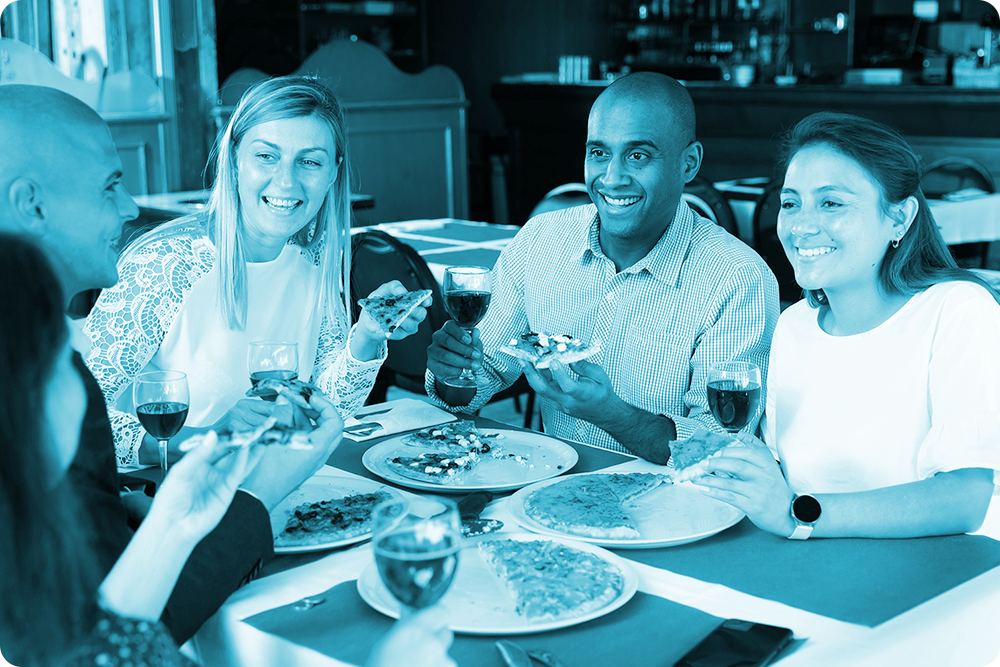As we pass the halfway point of 2025, new data from Meaningful Vision reveals a hospitality sector wrestling with cost pressures, staffing challenges, and changing consumer habits. Tracking more than 60,000 of the UK’s leading outlets, from fast-food and casual dining to coffee shops and bakeries, Meaningful Vision offers a comprehensive picture of how the market is evolving.
Slowing Store Growth
One of the clearest signals of change has been the slowdown in new store openings. In the first half of 2025, overall openings rose just 2%, less than half the pace recorded a year earlier. This slowdown affects most fast-food segments, from bakeries and chicken shops to coffee chains and ethnic outlets. The one exception is burgers, which maintained a healthy 2.6% growth rate. Despite many new players announcing growth plans, pizza slipped into negative territory with a 0.7% decline as operators face a struggle to balance rising costs with intense price competition.
London Loses Momentum
For the first time since the post-Covid recovery, London, long the bellwether of hospitality traffic, has shown signs of weakness. Footfall in the capital slowed, even as Northern Ireland, the South, Wales, and Scotland posted gains. Across the UK as a whole, the picture is mixed: overall traffic is slightly stronger than in the same period last year, helped by fast-food’s modest 0.8% increase. Q2 in particular delivered a welcome lift thanks to robust growth in April and May, though June brought the weakest year-on-year figures since early 2025.
Still, growth in guest numbers has not kept pace with new openings. Even in fast-food, like-for-like traffic fell by 1.3%, as expansion increasingly cannibalises existing trade. As Meaningful Vision CEO Maria Vanifatova notes, this is a familiar pattern: “In the early stages, new stores appear in high-demand central locations, but over time expansion spreads into smaller areas with less footfall, reducing per-store averages.”
Promotions Hit New Highs
In 2025, if there is one strategy in particular that operators appear to be focusing on, it’s promotions. Restaurant promotions rose 23% in the first half of the year, nearly matching the 25% growth seen in 2024. This means in just two years, promotional activity has grown by almost 50%.
Delivery platforms, however, are driving the most dramatic change. Promotional offers on these apps grew 93% in H1 2025 alone, more than doubling in just two years. According to Maria Vanifatova, this reflects “a perfect storm of economic pressure and platform strategy. With consumers more price-sensitive than ever, and delivery apps locked in fierce competition, promotions have become the go-to lever for driving volume.”
Special pricing remains the top tactic, rising to 59% of all price promotions in restaurant apps, while loyalty-linked offers typically deliver even deeper discounts (31% compared with 19% for delivery platforms).
Shifting Dayparts
Changing work patterns are also reshaping when people eat out. Breakfast, which surged in 2023 and 2024 as commuters returned to offices, is now slowing. Instead, afternoon traffic between 3pm and 6pm has become the fastest-growing slot, reversing its decline from last year. Dinner trade has improved too, while late evening visits remain in negative territory but are showing signs of stabilisation.
Much of the afternoon uplift is being driven by bakeries and coffee shops, which account for nearly 80% of the growth. Vanifatova links this shift to hybrid working: “As people’s schedules become more flexible, we’re seeing eating habits move outside of traditional meal times. The emphasis is less on breakfast and lunch in city centres, and more on snacking or dining in the late afternoon.”
Looking Ahead
H1 2025 paints a picture of a sector under pressure but still adapting with agility. Slower expansion, softening footfall, and rising costs present challenges, yet operators are finding ways to respond. Promotions, particularly on delivery platforms, are reshaping the competitive landscape, while shifting consumer behaviours are opening new opportunities in afternoon and evening trade.
As Maria Vanifatova, the CEO of Meaningful Vision puts it, “Maintaining resilience will require understanding what drives consumer behaviour, tracking what works, and adjusting promotions and store strategies accordingly. The fast-food market is still largely driven by new openings. However, since guest numbers are not increasing on a like-for-like basis, simply expanding the number of outlets is a limited growth strategy in a market where demand is struggling. New customers are primarily being captured by new chains and independents that are facing intense competition.”
Meaningful Vision will continue monitoring these dynamics throughout the year, providing fresh insights into how hospitality brands can navigate the pressures of 2025 and beyond.
Read more on the Foodservice market trends and challenges in our article How Loyalty and Promotions Drive Restaurant Growth.
